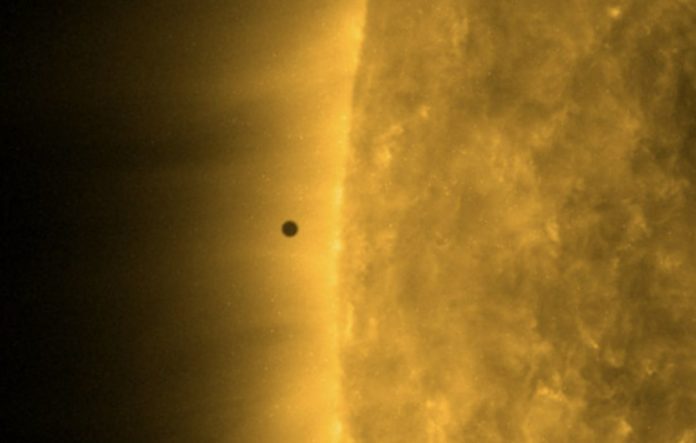On April 12, a gigantic wave of plasma from the Sun completely engulfed Mercury, the first world in our planetary system, ripping off part of its atmosphere and destroying its surface materials.
The powerful eruption, a coronal mass ejection (CME), was observed erupting from the far side of the Sun on the night of April 11, taking less than a day to hit Mercury. As explained in ‘Spaceweather’, the intensity was such that the burning gas cloud could have created a ‘temporary atmosphere’ on the planet, and even fed Mercury’s tail with more material, similar to that of a comet.
As usual, the surge of plasma arose from a sunspot, a dark area cooler than the rest and in which powerful magnetic fields knot, twist and finally break, causing a ‘whiplash’ of burning plasma, a coronal mass ejection.
During these events, the Sun violently releases billions of tons of material, very energetic particles that move very quickly through space.
The Sun emits CMEs in all directions, and although many of these fiery clouds are lost in space, others find planets in their path. On worlds that, like Earth, have a shielding magnetic field, most CMEs are absorbed and trigger powerful geomagnetic storms.
Some of the particles in the plasma cloud, however, manage to filter down magnetic field lines near the poles, churning up molecules in the atmosphere and releasing energy in the form of light, giving rise to the beautiful Northern Lights.
The strongest geomagnetic storms, despite such natural protection, have the potential to disable communications satellites, cripple computers and other electronics, and even burn down power plants.
But Mercury has no such defenses. Its magnetic field is very weak, and add to that its proximity to the Sun. This means that when the Sun throws a CME in its direction, the effects are devastating.
‘Solar aggression’ has robbed the planet of its almost non-existent atmosphere over millions of years. And the atoms that remain in it are constantly lost in space, generating a comet-like tail of ejected material that extends in the opposite direction from the Sun.
The solar ejecta particles themselves replenish those that are lost, resulting in shaky ‘temporary atmospheres’ all over the earth.
Until recently, scientists weren’t sure whether Mercury’s magnetic field was powerful enough to induce geomagnetic storms, but two studies published in February in ‘Nature Communications’ and ‘Science China Technological Sciences’ have shown that it is. The first paper showed that Mercury has a ‘ring current’, a doughnut-shaped flow of charged particles that flows around a field line between the planet’s poles, and the second noted that this current is capable of triggering geomagnetic storms.
The coronal mass ejection on April 12, therefore, may have triggered one such storm, and a large one, the researchers explain. Solar activity, which will peak in its 11-year cycle around 2025, has increased much faster than official forecasts predicted, causing solar flares and coronal mass ejections much larger than expected.
Image Credit: Getty
You were reading: Sun sweeps Mercury with a powerful surge of plasma
